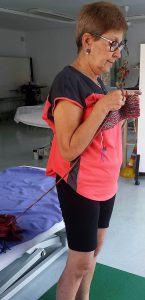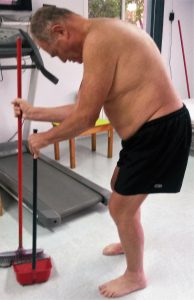In everyday life we carry out many functional movements that involve the ability to maintain balance, not only in positions static as standing in a supermarket queue, but also dynamic such as walking on the street or with movement of the trunk, arms and legs. Some of them are transfers from bed to get standing, or bed to a wheelchair, or from the wheelchair to the toilet. When remain us stand also prescisamos of balance to dry our hair, or prepare food in the kitchen.When we perform daily daily activities we need that our brain is attentive to the activity that we perform (example: wash dishes, look at the mobile…), therefore the maintenance of the balance have to be automatic, it is saying, not consciously, we control the activity of the muscles that make us maintain posture. This ability to perform a task to balance while we carry out an activity as a reply to a message from the mobile, or manipulate a small object is called the capacity of dual task.
Neurorehabilitation clinic we attach great importance to the work of the balance. We focus therapies to prepare the muscles and improve sensitivity to the body perform a good postural responses to an imbalance. When we work the balance, at the same time, carry out a dual task, with the purpose of automating postural reactions and that we can divert our attention and concentration to other task (prepare a meal, check the mobile, maintaining a conversation).
When we have altered the ability of balance, is very important to monitor the situations of everyday life in which easily can lose the balance by focusing on the activity (use of the WC, shower, while we wear it). In these situations should monitor as the person may not maintain their attention in posture and therefore will have to be controlled by the brain in an automatic way. This is why rehabilitation sessions also have to work how to ensure a good balance to prevent falls of the patients with neurological injury such as stroke, Multiple Sclerosis, among others.

